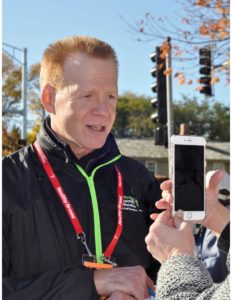Health Care’s Communication Filtered
Published on August 1, 2017, at 9:21 p.m.
by Katie McKinzey
How healthy are your facility’s communication skills? In health care public relations, change is constant. There are multiple audiences needing individual answers/messages relayed to them. The media especially always wants the details of the next big story or new policy information on health care reforms. There are also new bills and codes to follow that need to be upheld. With so much change and multiple audiences, what is the actual role of health care PR agencies?

Keith Hartenberger is the go-to guy and “newsroom director” at Edward-Elmhurst Health. From hiring writers to writing content himself, he told of his role and how he responds and filters messages to the media, as well as any of the health care facility’s audience. As a public relations officer from southwest Chicago, he shared three duties he and his team perform daily as health care PR professionals:
- Dealing with the media
“The core of my job is dealing with the media, whether it be to announce the hospital’s latest state-of-the-art treatment or what the details of a crisis situation are,” Hartenberger said.
He said that media try to reach out to families or even hospital floor managers to gain information of a hot topic story. As a public safety initiative, their team is always aware of the media in or around the hospital, as well as anyone with a camera.
- Protecting the patients:
“As PR professionals, our team works for the patients, not for the media,” Hartenberger said.
For a recent story of a Chicago Amtrak incident, the story itself and comments of the injured train conductor were filtered through Hartenberger and his team first before media could reach the conductor or his family.
“We try to make sure privacy is upheld at all costs for patients and their families because it is our job to protect them,” Hartenberger said.
- Pitching stories from hospitals:
“Hospitals are always gaining new technology, new initiatives for their systems, hiring new employees, such as a CEO or doctor, or we are learning new information to share with our readers, and it is our job to relay this information in a timely and efficient manner,” Hartenberger said.
It is upon health care PR professionals, as well as all PR professionals, to distribute new and important information such as the examples given above to audiences. Through press releases, blogs, Facebook pages, tweets, Instagram and sometimes even by word of mouth, it is the job of those employees who come in early and stay a little longer.
Content specialist Janet Hosey writes weekly blogs and social media posts to share information and content with readers.
“As a blogger, I write one or two blogs a week about health and wellness for our readers, as well as for the community organizations who share and relay information to the public,” Hosey said.
Under the Healthy Driven tab of the Edward-Elmhurst Health’s website, one could find health blogs with content such as “What to do if you get sick on vacation” or “What does vitamin D really do for us.” Making health care content relatable and useful will enhance the number of readers to the sites and social media outlets.
As a PR and marketing intern this summer for Rush Health Systems in the state of Mississippi, I have seen first hand how some of these duties and responsibilities are coordinated and taken care of in a professional manner. Each day presents a different task, with new information, as well as continued tasks. Patients are always the main focus and social media has become one of the biggest tools for relaying information and expertise.
Keeping our audiences informed, engaged, aware and protected is the main role of health care PR professionals. From the three daily responsibilities Keith Hartenberger mentioned and the blog content written by Janet Hosey, we see examples of duties they perform. After taking a look at behind the scenes of their jobs, we now understand the motive of filtered communication for healthy communication.




